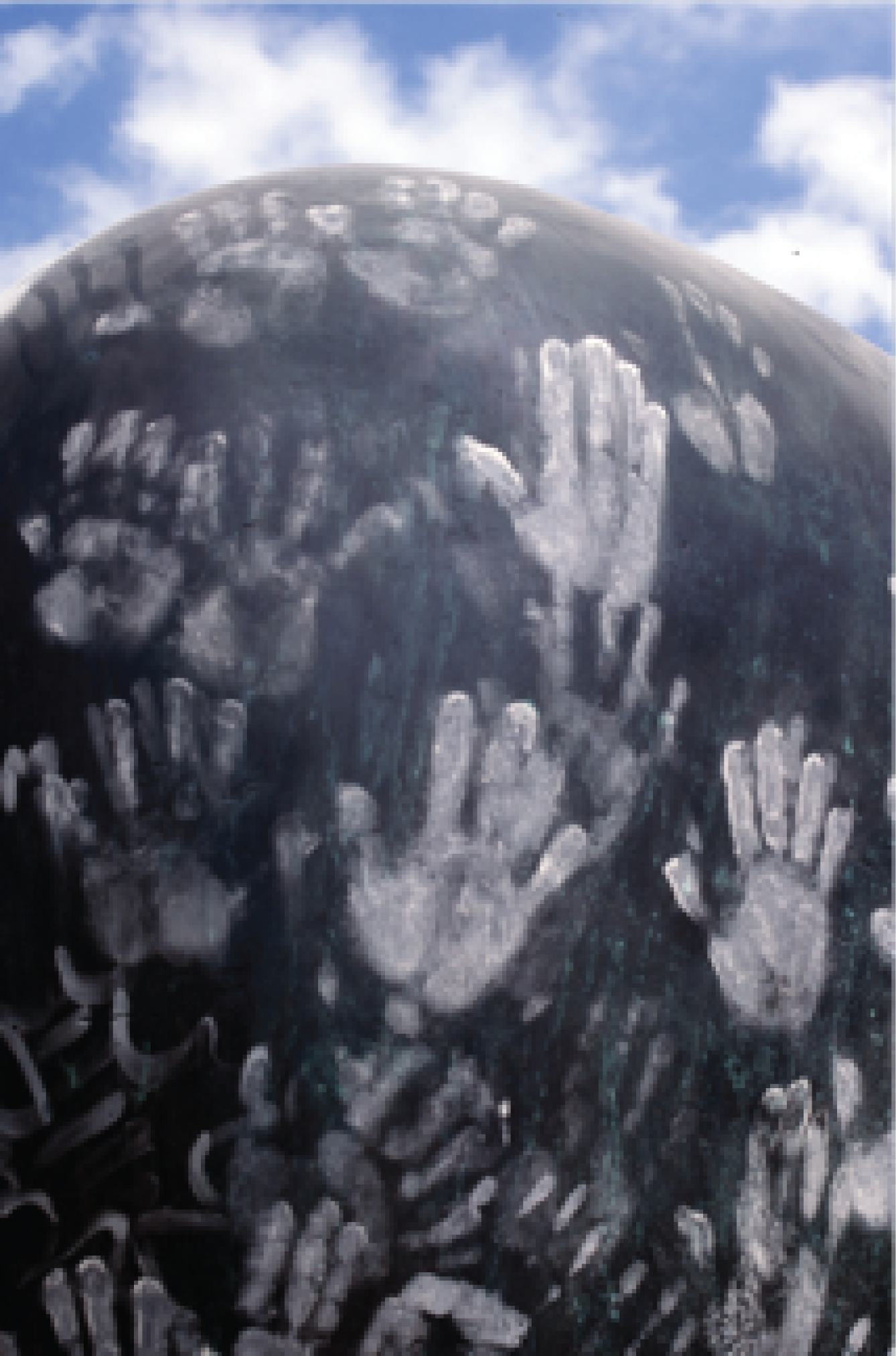
I had a wonderful encounter with a large sculpture by Henry Moore located in the Jardin des Tulleries in Paris. The sculpture sat in the middle of an enormous walkway between the Pyramide du Louvre and the Arc de Triomphe. Like many walkways in Europe it was not paved with concrete but was made of crushed limestone. The limestone is crushed finely and the bits of stone and dust are compacted into a permeable yet surprisingly durable
surface. When the weather is dry a fine dust will gather on the surface of the walkway.
As people passed this sculpture several would rub their hands in the dust and then place their handprint on the art. Most would then stand near their handprint and have someone take a picture of them in front of the sculpture. (This was before the invention of the telescoping selfie stick.) When I arrived this particular day the lower portion of the sculpture was entirely cover with hand prints.
This was not Moore’s or park administrators’ intention, and this unplanned, spontaneous, child-like activity undoubtedly concerned many art devotees. After I got past the initial shock of people touching and interacting with the art work, I became very intrigued with what was the happening. As far as I could tell the dark bronze sculpture was not damaged by this activity. When it rained the prints simply washed off, and the process repeated itself after the dust reappeared on the surface of the walkway. The individuals engaged in these activities
did not seem to be devoted art enthusiasts, but I did not detect any disrespect or distain in their actions.
The people engaged in this activity seemed earnest — relishing the opportunity to connect and become a part of this piece of public art, even if it was just for a moment. It is interesting to consider what happens to a work of art after the ownership of a work is transferred and is no longer is under the artist’s direct control. I can only hope that people have the same urge to connect with my work.
